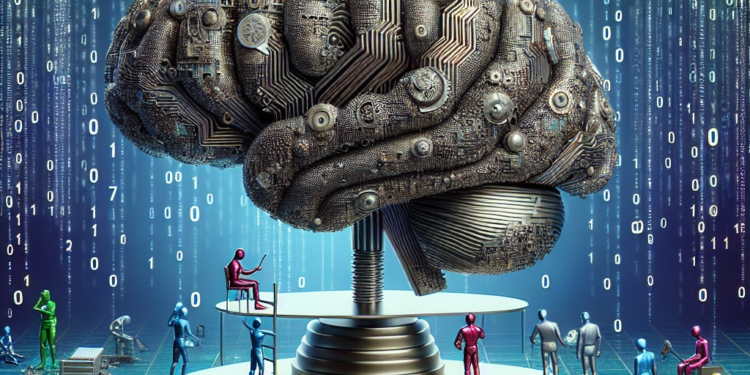Artificial Intelligence (AI) has rapidly become an integral part of modern society, with applications ranging from self-driving cars to personalized recommendations on streaming platforms. AI systems are designed to constantly learn and adapt to their environments, making them incredibly powerful tools for analyzing data, making predictions, and automating tasks. However, like any technology, AI systems have limitations and areas for improvement.
One of the key challenges in AI development is optimizing these systems for improved functionality. This involves refining algorithms, fine-tuning parameters, and ensuring that the AI system performs at its best under various conditions. In this article, we will explore the importance of optimizing AI systems, discuss common optimization techniques, and highlight the benefits of well-optimized AI systems.
Why optimization is necessary
AI systems are complex networks of algorithms and data that must be constantly updated and refined to achieve peak performance. Optimizing an AI system involves fine-tuning its underlying algorithms and parameters to improve its accuracy, speed, and efficiency. Failure to optimize an AI system can result in subpar performance, increased computational costs, and even system failures.
One of the main reasons why optimization is necessary is the fact that AI systems are built on algorithms that are inherently imperfect. These algorithms are developed by humans who are subject to biases, errors, and limitations in their understanding of the problem domain. As a result, AI systems may produce inaccurate predictions, make incorrect decisions, or fail to learn from new data.
Furthermore, AI systems are usually trained on large datasets that contain noise, outliers, and missing values. These imperfections in the data can lead to suboptimal performance in the AI system, as it may learn spurious correlations or fail to generalize to new data. Optimization techniques can help address these issues by identifying and mitigating sources of error in the AI system.
Common optimization techniques
There are several common techniques for optimizing AI systems, each with its own strengths and weaknesses. One of the most popular optimization techniques is hyperparameter tuning, which involves adjusting the parameters of the AI model to find the optimal values that minimize the loss function. This process is often carried out using techniques such as grid search, random search, or Bayesian optimization.
Another common optimization technique is feature engineering, which involves selecting, transforming, and combining features from the input data to improve the performance of the AI model. Feature engineering can help reduce the dimensionality of the data, capture relevant patterns, and enhance the model’s predictive power.
Ensemble learning is another popular optimization technique that involves combining the predictions of multiple AI models to improve the overall performance. By leveraging the diversity of different models, ensemble learning can help reduce overfitting, increase robustness, and enhance the generalization of the AI system.
Regularization is a technique used to prevent overfitting in AI models by adding a penalty term to the loss function that discourages complex models. By penalizing large weights or complex structures, regularization can help improve the generalization of the AI system and prevent it from memorizing noise in the training data.
Benefits of optimized AI systems
Optimizing AI systems can lead to a wide range of benefits, including improved accuracy, efficiency, and robustness. By tuning the algorithms and parameters of the AI model, developers can reduce errors, increase predictive power, and enhance the overall performance of the system.
In addition, optimization can help reduce computational costs by making the AI system more efficient in terms of memory usage, processing speed, and energy consumption. This can lead to faster training times, quicker inference speeds, and lower hardware requirements for deploying the AI system.
Furthermore, optimizing AI systems can improve their interpretability, making it easier for developers and users to understand how the system works and why it makes certain predictions. By fine-tuning the model’s parameters, selecting relevant features, and combining predictions from multiple models, developers can create AI systems that are more transparent, explainable, and trustworthy.
Conclusion
Optimizing AI systems is essential for improving their functionality, accuracy, and efficiency. By fine-tuning algorithms, adjusting parameters, and leveraging techniques such as hyperparameter tuning, feature engineering, ensemble learning, and regularization, developers can enhance the performance of AI systems and unlock their full potential.
The benefits of optimizing AI systems are numerous, including improved accuracy, efficiency, interpretability, and robustness. By investing in optimization techniques, developers can create AI systems that are more reliable, scalable, and effective in addressing real-world challenges.
In conclusion, while AI systems are incredibly powerful tools for analyzing data, making predictions, and automating tasks, they require constant refinement and optimization to perform at their best. By prioritizing optimization techniques and fine-tuning the underlying algorithms and parameters, developers can create AI systems that are more accurate, efficient, and trustworthy.













